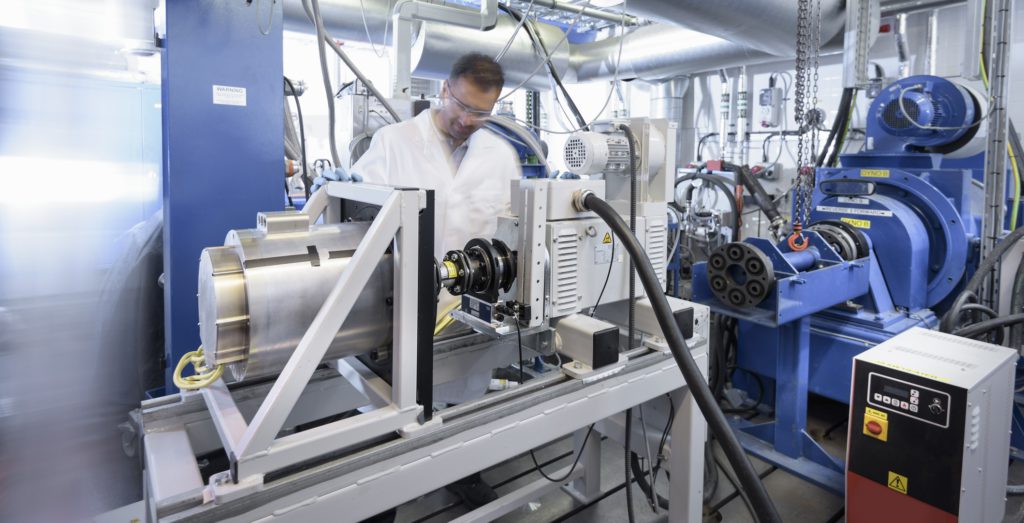European Commission launches raw materials alliance
01 October 2020

1 October 2020
The European Commission has launched the European Raw Materials Alliance (ERMA). Announced by Vice-President Šefčovič and Commissioner Breton, the new body will look to secure access to sustainable raw materials.
As plans to make a green coronavirus (COVID-19) recovery are spurred by advancing emissions targets, electric-vehicle (EV) incentive schemes, and shortening battery supply chains, efforts are being made to ensure the materials that enable an electric evolution are responsibly sourced.
The ERMA aims to make Europe more economically resilient by diversifying supply chains, creating jobs, attracting investments, and contributing to an enabling framework for raw materials and the worldwide circular economy. The association will identify barriers, opportunities and investment cases to develop capacity along the raw materials value chain, from mining to waste recovery.
This work will be essential for supplying the necessary materials that make up EV batteries. But it will also have a wider impact on the automotive industry. As green recovery plans encompass the means through which EVs are provided with electricity, the alliance will also focus on renewable energy sources, how materials are produced, as well as construction and digital capacities.
Diversifying supply chains
′Europe has set out the ambition to be the first supplier of green energy, to be the first digital continent, and also the first continent in terms of the circular economy,’ said Commissioner Breton at the ERMA’s launch. ′Making these ambitions a reality requires critical materials, such as lithium for batteries, magnets, or semiconductors.’
′To meet our Green Deal targets, by 2030 and by 2050, we will need even higher amounts of critical raw materials for our strategic sectors and technologies,’ he added. China provides 98% of the EU’s supply of rare earth elements, Turkey delivers 98% of the bloc’s borate and South Africa 71% of the Union’s platinum needs.
However, Breton pointed out that many of these materials are already present locally: cobalt, bauxite, beryllium, bismuth, gallium, germanium, indium, niobium and borate. ′We have, for example, considerable lithium resources in Europe,’ Breton said. ′We are positioning ourselves so that by 2025 we will be almost self-sufficient in lithium for our batteries.’
But as pointed out by Vice-President Šefčovič, Europe could require almost 60 times more lithium and 15 times more cobalt by 2050 for electric cars and energy storage alone. ′Demand for rare earths used in permanent magnets critical for products like wind generators electro-mobility solutions, batteries, radars and robots could increase up to ten-fold in the same period,’ he added.
As COVID-19 upset supply chains, the need to anticipate and prepare for future disruptions became clear. This means not only sourcing essential materials locally, but diversifying supply chains by forming partnerships with other countries like Canada and Australia. Alongside this, the need to establish a circular economy with recyclable materials became evident.
Following in EBA’s footsteps
These challenges facilitated the creation of a body that could not only handle local material sourcing, but establish new chains and reliable recycling systems. So, endorsed by 100 industry partners, 40 industry associations, the European Federation of Geologists, and the French Ministry for the Economy and Finance, the ERMA was created.
′The overall goal of the European Raw Materials Alliance is to boost EU resilience in the rare earths and permanent magnets value chain that are vital for many industrial ecosystems,’ said Breton. ′These industrial ecosystems bring together all actors from a sector, from large companies to small SMEs and start-ups, from training centres to research institutes, and from associated services to suppliers.’
Back in 2017, Europe was starting from scratch in the battery field when the European Battery Alliance (EBA) was established. However, work completed by the EBA provides the EMA with a solid foundation of investment and regulation to build from. In 2019, for example, investment in Europe reached €60 billion, three times more than China. Å efÄoviÄ explained that ′Europe is well on track to become the second (after China) manufacturer of the lithium-ion battery cell by 2024, overtaking the US and the rest of Asia.’
From dependency to strength
The stakeholder consultation process involving more than 150 industrial and non-industrial actors will be carried out by the innovation community, EIT RawMaterials. Under the ERMA, these organisations will work towards the objective of securing the supply of sustainable raw and advance materials to build a new industrial ecosystem.
′Together, we can turn Europe’s raw material dependency into a major strategic strength for our continent, while continually applying the highest environmental and social standards. We are honoured to manage the European Raw Materials Alliance, which will drive diversification of sustainable supply and help make better use of the resources available within the EU,’ said CEO Bernd Schäfer.
Now that the European Commission has dedicated itself to a green path, the need for strong supply chains to pull this transition off will be essential. With the ERMA scouring the industry for bottlenecks and investment opportunities, it will need to work overtime to ensure there are no weak links.